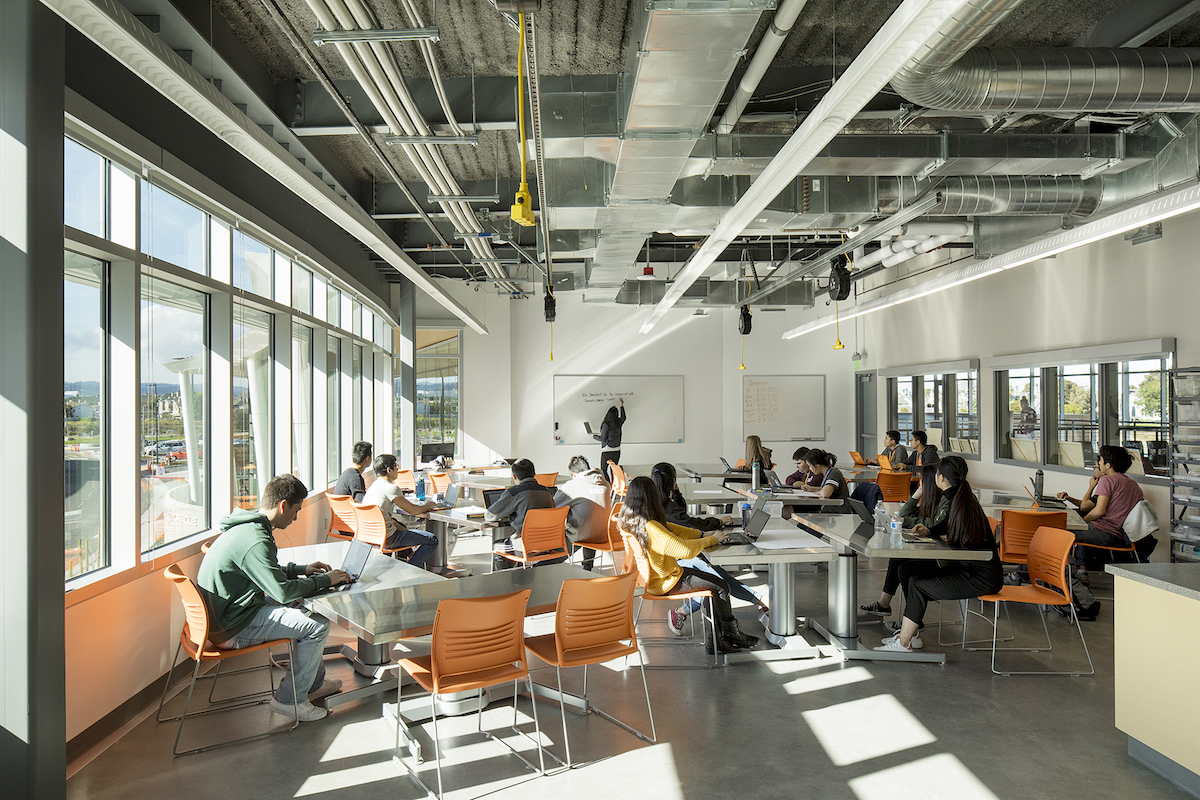Exploring Space

Participating teams of teachers and administrators in each EXPLOREschool have started their pursuit of designing their high school for the future! The LEARN facilitation team is customizing each LAB (there are 8 labs scheduled throughout the year) to guide each EXPLOREteam through the design thinking process in a way that fits the school and its unique context. The Design Thinking process allows schools to truly explore the possibilities and have time before making a commitment to implement next year.
Already participants have observed the benefits of having dedicated time to share, reflect and learn together. They are connecting with students through ‘empathy interviews’ and starting to think of the high school experience and its five systems – Spatial, Temporal, Andragogical, Relational and Communal – in new ways!
Through both the Research and Design phases of the initiative, specific elements were identified as being essential for a designated NEXTschool. In the upcoming months, EXPLOREteams will work to adapt and integrate these characteristics into their own NEXTschool.
Each of the upcoming NEXTschool blog postings will aim to support our EXPLOREteams with ideas and resources related to one of the STARC System Drivers with this blog focusing on the Spatial System.
Here are the specific components of the Spatial System to be integrated into the school-based models:

As participants start to explore the spatial aspects of their school and how they can be adapted to support the collaborative, flexible and community-oriented NEXTschool model, using technology to support learning and planning, they can refer to several relevant resources:
Redesigning Learning Spaces: What Do Teachers Want For Future Classrooms?
(Pedro, N., 2017) This research found that: “Teachers’ models of the future classroom showed that teachers claim for a space that enables learners to actively manage their learning process and to engage with each other, a space that promotes autonomy, dialogue and group work. Learning was mostly referred as an active and social process and future classrooms must be designed with that in mind”
The Space: A guide for educators (Hare & Dillon, 2016)
This book poses questions such as: What’s the purpose of our learning spaces? Who are the spaces for? What kind of behaviours does our present learning space encourage? What kind of learning behaviours do we want to encourage? What implications does changing space have? It encourages asking students these questions and goes on to identify purposes of space to consider:
- Spaces that foster Collaboration
- Students as Designers
- Spaces to Create
- Spaces to Showcase
- Spaces for Quiet
Blueprint for tomorrow: Redesigning Schools for Student-Centered Learning
(Nair, P., 2014) In this book, the author challenges us to “Think about school buildings as the hardware within which the software of education runs. Like any piece of hardware, every school building also has limitations on what kinds of software it can run. The question we must ask ourselves is this: Do we design new software – the future of education – around the limitations posed by the existing hardware – school buildings? Or do we design a twenty-first-century education model according to what we think is best for students and then figure out how the buildings can be designed or renovated to accommodate this model?”
And here are some schools that have spaces you’ll want to check out!
- Design Tech High School, California
- Read here about the space and design of High Tech High Schools, California
- Watch this video about the space at Eminence School in Kentucky
- Lab École, Québec – Le Lab-École est un organisme sans but lucrative qui vise à rassembler une expertise multidisciplinaire pour concevoir l’environnement des écoles de
- Green School, Bali – a wall-less, natural campus with a purposeful learning programme
Do you have other “Spatial resources” to share with our team? Please send these along with your questions and comments to nextschool@learnquebec.ca
https://hosted.learnquebec.ca/nextschool/2018/11/20/exploring-space/NEXTschoolParticipating teams of teachers and administrators in each EXPLOREschool have started their pursuit of designing their high school for the future! The LEARN facilitation team is customizing each LAB (there are 8 labs scheduled throughout the year) to guide each EXPLOREteam through the design thinking process in a way...lizfalco liz@lizfalco.caAdministratorNEXTSchool
